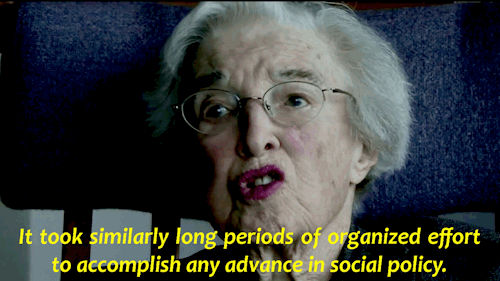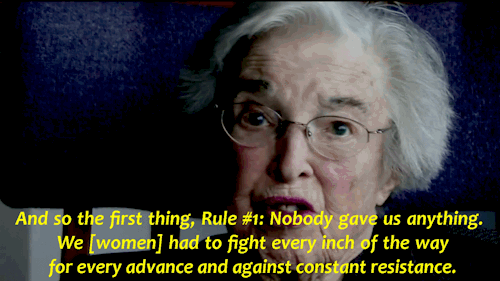The Handmaid’s Tale Is A NECESSARY Watch To Further Understand Uttara Phalguni. The Show Is Basically
The Handmaid’s Tale is a NECESSARY watch to further understand Uttara Phalguni. The show is basically about men profiting off and milking women for children in order to create stronger societies; they trade women and use them as cattle for reproduction. On top of that, there is immense fruit symbolism in the show. Most of the cast have Uttara Phalguni, Pushya or Rohini placements. Uttara Phalguni deals with the oppression of women as “fruit-givers” aka all women being used for their precious, abundant life-force energy. Milked by society for their abundance yet abused and suppressed like they are nothing. Under these rigid roles, Uttara Phalguni women must use their power of seduction and their wit to outsmart the system and profit off it right back in order to obtain spiritual freedom.

Unconsciously, this is why a lot of Uttara Phalguni women would rather choose to stay away from the process of marriage and love because she believes most men are not spiritually awakened enough to treat her properly as the divine being she is. She avoids being objectified and oppressed at all costs. That’s why when Ketu entered Uttara Phalguni, the 4B movement hit. I actually predicted something like that would occur before Ketu entered this nakshatra because I KNEW what this nakshatra is all about.
The sutra of this nakshatra mentions a wish-fulfilling, fruit giving woman. This nakshatra is all about the continuation of traditions through lineages or societies. It is the process of marrying and extending the family or the process of joining in union with someone and extending sacred traditions (which is why Uttara Phalguni is associated with secret societies). This nakshatra deals with hypergamy and social climbing through generating one’s own success through their creative self-expression and fruits of wisdom that have been passed down to them from generations ago.
For these reasons, these natives are very focused on creating alliances with foreign nations (in order to strengthen their own). They are lovers of history (see Indiana Jones, played by an Uttara Phalguni native) who appreciate and preserve artifacts of the past. Magha is often renowned for its ability to channel the sacred power of the ancestors, but Aryaman (Uttara Phalguni) is the King of those ancestors.

This nakshatra is also associated with conquering the material world and anything that descends from the heavens onto Earth (so like, aliens taking over the world is a common theme in this nakshatra as well, which is why these natives are often casted as alien hunters). Christopher Columbus (unfortunately) had Uttara Phalguni moon.
Arjuna said he was Phalguna as he was born on a day where moon transited through the Phalguni nakshatras and he conquered some parts of the material world in which some parts he did it through marriage in order to create stronger alliances with each part of the world.
More Posts from Itsmymochichim and Others

what the fuck


girl BREAK FREE FROM YOUR HUSBAND ENTIRELY
DIVORCE


Just a speculation: if, one of the things that sun represents is energy and vitality in astrology, can that mean that what ever house the sun is placed in, the themes related to that house energises you or brings you vitality? For example: Sun in the 2nd house might feel energised when they have a stable and secure flow of money, quality time with family, trying out new food and being clear on your values or priorities.





Historian and Feminist Scholar Gerda Lerner
Saturn Atmakaraka: Finding Light on the Path of Karma
"Saturn , has a tall and thin body, has yellow eyes and is airy (vata) in constituition; he has large teeth, is lazy and has coarse hair." Parashari 3.28-29



In Vedic astrology, the concept of AtmaKaraka is one of the most profound and revealing in the natal chart. The atmaKaraka, also known as the “soul indicator”, is the planet that bears the greatest responsibility for the individual’s spiritual journey. It represents the greatest challenges, lessons and the path that the soul must take in this life to achieve growth and fulfillment. The planet with the highest degree in any sign becomes the AtmaKaraka, “the significator of self” or “self-indicator”. This, as the lord of the Ascendant, can become the most powerful planet in your chart. It is the most important planet to consider when judging an individual’s spiritual nature, particularly in relation to its position in the ninth harmonic chart (navamsha). He provides us with a key to the aspirations of the soul. We often consider its position, such as the Ascendant, and read the chart indications accordingly.
This planet not only guides the purpose of life, but also indicates internal obstacles that a person needs to overcome to find their true identity. The AtmaKaraka position shows how we deal with our weaknesses, how we develop spiritually and where we should invest energy to evolve. The Atmakaraka carries the most important karmic lessons for this incarnation, becoming a key to understanding destiny and the soul’s inner motivations. Although there are many other important points in the birth chart, the Atma is special because it is a direct representation of the qualities that our soul has already mastered in past lives and those that still need to be worked on. Depending on which planet occupies this position, the nature of these lessons varies profoundly. AK influences how we approach challenges in different areas of life, right down to our spiritual worldview.
Saturn is traditionally the most difficult of the major planets, the legendary king of the malefics, that's why Saturn Atmakaraka is the most challenging. He often faces challenges in life, especially in the areas of work, health and relationships. Saturn is the significator of life itself. It indicates fate, term of life, longevity. A strong Saturn protects the life. Saturn is the planet to be propitiated in old age. He indicates the regime necessary for full life and longevity, violating which we suffer from premature decay and death. Though Saturn possesses a higher and more beneficent side, at least from the standpoint of the spiritual life, even this is stern and exacting, hard to live up to and to endure, a power of discipline, asceticism and solitude.
Saturn brings limitation and obstruction, hindrance in self-expression and in self-manifestation, which may become oppression and adversity. He is also known for being the God of Death, while Jupiter is a kind God. As Jupiter is the God of joy, he is the God of sorrow. Saturn is the significator of disease, old age and death; the great enemies of human life, which overcome all life bound by time. Therefore, the placement of Saturn in Atmakaraka is the ultimate issue of our life and destiny, the hard facts or the harsh reality that we must face. Because Saturn in the Atmakaraka indicates that the person may feel that his or her life is too tied to issues of responsibility, the need to make sacrifices or deal with pain and suffering in a constructive way. Here, destiny does not present itself easily or immediately, but is forged with perseverance, patience and facing the harshness of reality. For those with Saturn Atmakaraka, reality may seem harsher and so they may become depressed in the face of it. They refuse to give in to destruction but destruction is the necessary counterpart for creation, as is decay and death required for new life and growth.
Saturn gives bad luck, misfortune, difficult karma. It is the planet of bad karma or unhappy destiny. However, these may come upon a soul not because it has been bad or slow to evolve in past lives. Some souls, particularly those who are more advanced, may seek such things as a means of faster and deeper spiritual growth in life. Anyone can turn to the Divine in prosperity, but who can do so in great adversity? Such is the measure of a great soul. Saturn is also the suffering that makes us grow inwardly.
The influence of Saturn is to delay, to hold back. As the slowest of the planets, he slows things down, holds back their development. Those retarded in mind or speech are often under the strong affliction of Saturn. He makes us deaf and blind, stunted or deformed.
Saturn is the significator of old age, the God of time, who brings on all the degenerative processes of aging, the failure of our faculties and our powers. To the such a badly placed Saturn causes premature aging. Saturn takes away our vitality, on a physical or on a mental level. He causes depression, melancholy, self-pity and gives rise to worry, fear and anxiety. As a nervous planet, Saturn obstructs nerve functioning. He may cause numbness, paralysis or degenerative neurological disorders. His obstructing and repressing influence on the mind may promote neurosis or insanity. Saturn is behind most diseases, particularly chronic, degenerative diseases, diseases of old age, including arthritis and Cancer. As representing decay he can cause an accumulation of waste materials in the body and often is a point of devitalization in the chart.
As the planet of the ego, Saturn is also the planet of fear, on which the ego is based. Saturn creates fear and darkness in the mind. It makes us feel that we cannot overcome things, that life is against us. It makes us doubt ourselves, doubt even the Divine, and makes us prey to dark fears, fantasies, and phobias.

Saturn Devouring His Son is a painting by Spanish artist Francisco Goya. It is traditionally considered a depiction of the Greek myth of the Titan Cronus, whom the Romans called Saturn, eating one of his children out of fear of a prophecy by Gaea that one of his children would overthrow him.
Saturn is the God who eats his own children, who devours his own progeny. He raises people up, but eventually brings them down in a very precipitous fall. Those who are under the spell of their basic values will eventually be destroyed by them. He shows falsehood for what it is, in which there is the revelation of the enduring value of truth.
Saturn is not only in many ways the lowest of the planets, it is also the highest. Its lesson is the most difficult, but the most rewarding. Saturn is the grandfather spirit and lawgiver, our guiding ancestor. He represents not only the negative influence of the past that constrains us, he represents the positive spirit of the past that brings order and consistency to our lives. Saturn in Hindu mythology is the son of the Sun. The Sun moves in a chariot driven by Saturn. Saturn is the darkness, death and sadness that we must overcome for the revelation of the true light. He is the guardian of the mysteries of truth - which is possible only through a very precise and demanding cultivation of attention. Saturn is the yogi in meditation. He can give complete detachment and independence. He is the one who stands alone and goes beyond the limitations of the masses. It shows the path of transcendence, though necessarily difficult, by which all limitations can be overcome by resorting to our true and unlimited Self. In this respect, the power of Shiva, the lord of the yogis, the god of death and transcendence, can work through Saturn.
Saturn in the Atmakaraka places the individual on a path of self-improvement, where life experiences often involve long periods of effort without immediate rewards. The soul, in this case, seeks fulfillment that can only be achieved through discipline and acceptance of limitations, whether in relation to external issues (such as social responsibility, work and professional life) or internal issues (such as overcoming fears, insecurities and deep psychological issues).
Saturn here forces the person to face reality as it is, without illusions or escapes, leading the soul to mature and become more aware of the responsibilities it carries, whether in terms of individual karma or in relation to the collective. Life may seem like a constant search for stability, security and structure, but at the same time, Saturn demands patience to accept that the fruits of this search will not come immediately. Therefore, Saturn in the Atmakaraka is a position that brings depth and intensity to the spiritual and personal journey, challenging the individual to find greater meaning through experiencing the harshness of life, while working tirelessly to build something lasting, grounded and realistic.
one time my university invited a motivational speaker and he started by talking about historical figures he found inspirational (like in business/economics) and then asked "what do they have in common?" and a girl in the crowd shouted "they're all men!"
Not sure who she was but I'll never forget her
i feel like another tragedy that comes with the rise of liberal feminism and gender ideology is the bastardization of intersectionality in feminism. intersectionality was meant to acknowledge the combined bigotry that black women, lesbians, and disabled women face in the context of patriarchy, but since men can’t help themselves, now you have tras/mras screaming “if your feminism doesn’t include black men, trans women, disabled men, my brothers dog, my uncles truck it’s NOT feminism sweetie” and calling it progressive while attacking real feminists for actually caring about women.
hi, a lot of you need a perspective reset
the average human lifespan globally is 70+ years
taking the threshold of adulthood as 18, you are likely to spend at least 52 years as a fully grown adult
at the age of 30 you have lived less than one quarter of your adult life (12/52 years)
'middle age' is typically considered to be between 45-65
it is extremely common to switch careers, start new relationships, emigrate, go to college for the first or second time, or make other life-changing decisions in middle age
it's wild that I even have to spell it out, but older adults (60+) still have social lives and hobbies and interests.
you can still date when you get old. you can still fuck. you can still learn new skills, be fashionable, be competitive. you can still gossip, you can still travel, you can still read. you can still transition. you can still come out.
young doesn't mean peaked. you're inexperienced in your 20s! you're still learning and practicing! you're developing social skills and muscle memory that will last decades!
there are a million things to do in the world, and they don't vanish overnight because an imaginary number gets too big
every day is a struggle between the self that is consumed by the cruelty of the world and the self that recognizes the beauty in it
-
 11mysticdesires04 liked this · 3 weeks ago
11mysticdesires04 liked this · 3 weeks ago -
 rainyeggvoidpurse liked this · 2 months ago
rainyeggvoidpurse liked this · 2 months ago -
 shepherdsmincepie-blog liked this · 2 months ago
shepherdsmincepie-blog liked this · 2 months ago -
 inherbeing liked this · 2 months ago
inherbeing liked this · 2 months ago -
 melzya97 liked this · 2 months ago
melzya97 liked this · 2 months ago -
 cosmoss-express liked this · 2 months ago
cosmoss-express liked this · 2 months ago -
 yoormirar liked this · 2 months ago
yoormirar liked this · 2 months ago -
 saturnslovee liked this · 2 months ago
saturnslovee liked this · 2 months ago -
 moonlit-blue reblogged this · 2 months ago
moonlit-blue reblogged this · 2 months ago -
 itsmymochichim reblogged this · 2 months ago
itsmymochichim reblogged this · 2 months ago -
 itsmymochichim liked this · 2 months ago
itsmymochichim liked this · 2 months ago -
 ballsyei reblogged this · 2 months ago
ballsyei reblogged this · 2 months ago -
 ballsyei liked this · 2 months ago
ballsyei liked this · 2 months ago -
 notyourstepmom liked this · 2 months ago
notyourstepmom liked this · 2 months ago -
 invenusworld liked this · 2 months ago
invenusworld liked this · 2 months ago -
 vennavenus reblogged this · 2 months ago
vennavenus reblogged this · 2 months ago -
 strawberrymahabaleshwar reblogged this · 3 months ago
strawberrymahabaleshwar reblogged this · 3 months ago -
 strawberrymahabaleshwar liked this · 3 months ago
strawberrymahabaleshwar liked this · 3 months ago -
 distinguishedcloudfishbiscuit liked this · 3 months ago
distinguishedcloudfishbiscuit liked this · 3 months ago -
 nabaebae liked this · 3 months ago
nabaebae liked this · 3 months ago -
 skinnybubblegumpink-blog liked this · 3 months ago
skinnybubblegumpink-blog liked this · 3 months ago -
 amour-wishes liked this · 3 months ago
amour-wishes liked this · 3 months ago -
 iamchamakyouareberang liked this · 3 months ago
iamchamakyouareberang liked this · 3 months ago -
 neptunelement liked this · 3 months ago
neptunelement liked this · 3 months ago -
 inkcendiary liked this · 3 months ago
inkcendiary liked this · 3 months ago -
 mesmercurial reblogged this · 3 months ago
mesmercurial reblogged this · 3 months ago -
 mesmercurial liked this · 3 months ago
mesmercurial liked this · 3 months ago -
 la86n77 reblogged this · 3 months ago
la86n77 reblogged this · 3 months ago -
 emptythoughts100 liked this · 3 months ago
emptythoughts100 liked this · 3 months ago -
 mellowtragedywolf reblogged this · 3 months ago
mellowtragedywolf reblogged this · 3 months ago -
 mellowtragedywolf liked this · 3 months ago
mellowtragedywolf liked this · 3 months ago -
 mushroomcultist liked this · 3 months ago
mushroomcultist liked this · 3 months ago -
 pswce liked this · 3 months ago
pswce liked this · 3 months ago -
 starinbloom liked this · 3 months ago
starinbloom liked this · 3 months ago -
 hologramsheet liked this · 3 months ago
hologramsheet liked this · 3 months ago -
 anandamiide liked this · 3 months ago
anandamiide liked this · 3 months ago -
 cheezkacke liked this · 3 months ago
cheezkacke liked this · 3 months ago -
 nilas-beauty reblogged this · 3 months ago
nilas-beauty reblogged this · 3 months ago -
 nilas-beauty liked this · 3 months ago
nilas-beauty liked this · 3 months ago -
 vennavenus reblogged this · 3 months ago
vennavenus reblogged this · 3 months ago